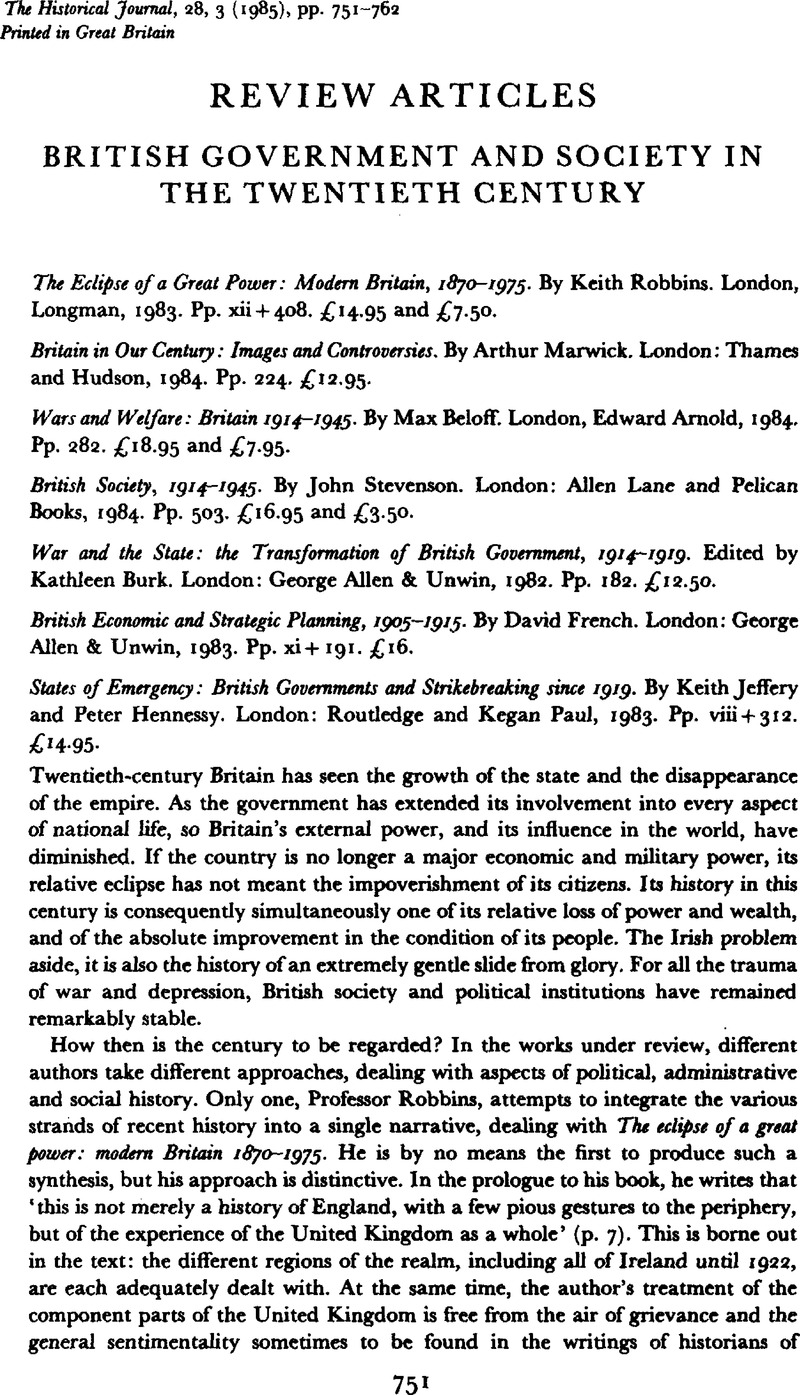No CrossRef data available.
Published online by Cambridge University Press: 11 February 2009

1 Interview with Sir Robert Fraser, KCB, KBE, 8 May 1982. Sir Robert served in the Treasury from 1914 to 1939.
2 Peden, G. C., British rearmament and the Treasury, 1932–1939 (Edinburgh, 1979)Google Scholar.
3 Minutes of Royal Institute of International Affairs British security group, 1 January 1945, Royal Institute of International Affairs archives.
4 Asquith, to Hamilton, , 27 09 1907, EW Hamilton papers, British Library, Add. MSS 48, 614Google Scholar.
5 See especially Johnstone, Paul Barton, Land fit for heroes: the planning of British reconstruction 1916–19 (Chicago, 1968)Google Scholar.
6 Lowe, Rodney, ‘The Ministry of Labour, 1916–1924: a graveyard of social reform?’, Public Administration, LII (1974), 415–38CrossRefGoogle Scholar; ‘The erosion of state intervention in Britain, 1917–24’, Economic History Review, 2nd series, XXI (1978), 270–86Google Scholar; ‘Bureaucracy triumphant or denied? The expansion of the British civil service 1912–1939’, Public Administration, LXII (1984), 291–310Google Scholar.
7 Wilson in fact did succeed Fisher in 1939, but it would be far-fetched to argue that he had been ingratiating himself with the Treasury since 1921 with this in mind.